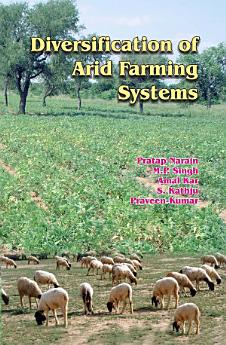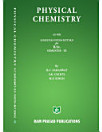Diversification of Arid Farming Systems
P. Narain · M.P. Singh · A. Kar · S. Katju · Praveen Kumar
એપ્રિલ 2009 · Scientific Publishers
ઇ-પુસ્તક
460
પેજ
reportરેટિંગ અને રિવ્યૂ ચકાસેલા નથી વધુ જાણો
આ ઇ-પુસ્તક વિશે
Over the years, economic considerations have overtaken the sustainability issue. Low and erratic rainfall, frequent droughts, the increasing costs of cultivation, lower compensation of labour and inputs have made farming in the arid regions a challenging enterprise. Employment opportunities in sectors other than agriculture have enticed many to cross the floor. The largest segment of the farming community, however, is constrained to make a living from farm related activities. With the opening of markets for international trade in farm commodities, the competition has toughened for the resource-constrained farmers of the arid regions of the country. On the other hand, useful technologies have been generated by researchers on many alternative systems, which could be adopted. In this scenario, the farmers could benefit greatly by inducing diversification in the farming systems and by strengthening the traditional systems. With this backdrop, a National Symposium on Livelihood Security and Diversified Farming Systems in Arid Region was organized by the Arid Zone Research Association of India at the Central Arid Zone Research Institute, Jodhpur, from January 14-16, 2006. Selected papers presented at the symposium and invited articles have been included in this compendium and are grouped in sections on Diversification, Strengthening the Traditional Farming Systems, Enhancing Resource Use Efficiency, Livestock-based Farming Systems, Value Addition, Socio-economic Issues and Transfer of Technology. Currently, food, water and energy crises are of global concern. The challenge ahead is to strike a balance between basic needs of a large population and to maintain the pace of development. Diversification of farming systems may contribute towards achieving this goal to some extent. It is hoped that the book will provide options for diversification of the existing farming systems and benefit there from.
લેખક વિશે
S. Kathju
Dr. S. Kathju, retired Principal Scientist (Plant Physiology), CAZRI, Jodhpur, is basically Plant Physiologist. He has over 30 years of experience working on diverse problems in the field of soil-water-plant relationships. For long he had been editing quarterly research journal Annals of Arid Zone.
આ ઇ-પુસ્તકને રેટિંગ આપો
તમે શું વિચારો છો અમને જણાવો.
માહિતી વાંચવી
સ્માર્ટફોન અને ટૅબ્લેટ
Android અને iPad/iPhone માટે Google Play Books ઍપ ઇન્સ્ટૉલ કરો. તે તમારા એકાઉન્ટ સાથે ઑટોમૅટિક રીતે સિંક થાય છે અને તમને જ્યાં પણ હો ત્યાં તમને ઑનલાઇન અથવા ઑફલાઇન વાંચવાની મંજૂરી આપે છે.
લૅપટૉપ અને કમ્પ્યુટર
Google Play પર ખરીદેલ ઑડિઓબુકને તમે તમારા કમ્પ્યુટરના વેબ બ્રાઉઝરનો ઉપયોગ કરીને સાંભળી શકો છો.
eReaders અને અન્ય ડિવાઇસ
Kobo ઇ-રીડર જેવા ઇ-ઇંક ડિવાઇસ પર વાંચવા માટે, તમારે ફાઇલને ડાઉનલોડ કરીને તમારા ડિવાઇસ પર ટ્રાન્સફર કરવાની જરૂર પડશે. સપોર્ટેડ ઇ-રીડર પર ફાઇલો ટ્રાન્સ્ફર કરવા માટે સહાયતા કેન્દ્રની વિગતવાર સૂચનાઓ અનુસરો.







